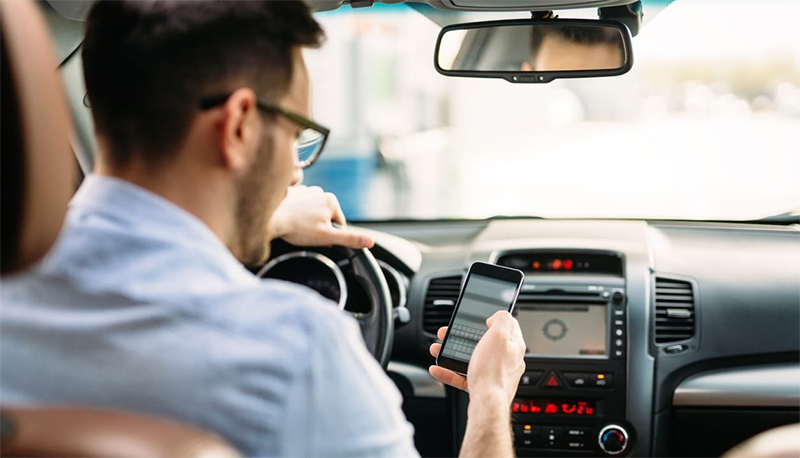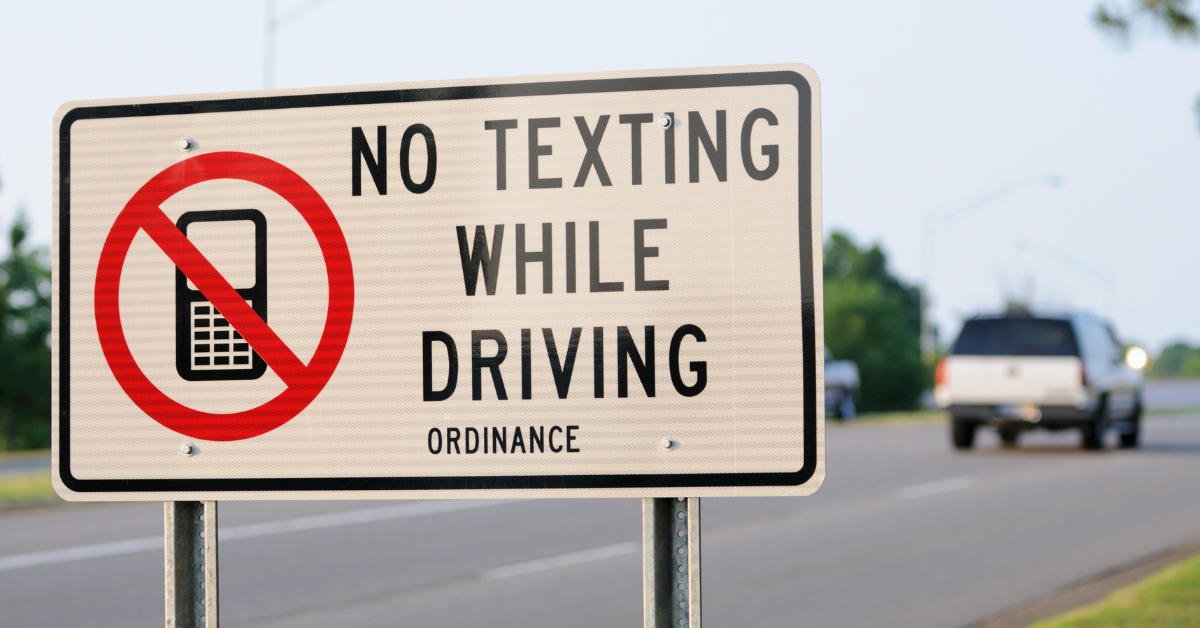The temptation to stay connected at all times through mobile phones has led to a concerning trend of distracted driving on Portland’s streets.
Texting and driving not only puts the driver at risk but endangers passengers, cyclists, and pedestrians alike. With the rise of smartphone usage, the dangers of distracted driving have never been more pronounced.

Factors That Contribute to Accidents While Texting and Driving
The act of texting itself creates a significant visual distraction as drivers divert their gaze away from the road to read or reply to messages. This visual disconnect impairs their ability to perceive and react to potential hazards ahead.
- The cognitive distraction caused by texting diverts a driver’s mental attention away from the task of driving, compromising their decision-making & reaction time.
- The manual distraction of physically manipulating a phone while driving leads to the driver taking their hands off the wheel, reducing their control over the vehicle.
- The combination of these factors increases the likelihood of delayed response times, decreased awareness of surroundings, and, ultimately, causes accidents while texting and driving.
Tips to Avoid Texting and Driving
When a text notification dings, it’s a natural response to check it. It requires wisdom and self-control to avoid doing this when driving.
Here are some ideas to manage the temptation:
- Turn off notifications: One of the biggest distractions is the constant beeping and buzzing of incoming messages. To resist the urge to check your phone while driving, turn off all unnecessary notifications.
- Use an app or setting: There are apps and features available that can assist in curbing the temptation to text and drive. These apps can automatically silence incoming notifications or send automated responses to let others know you are driving.
- Plan ahead: Before you start your journey, ensure that you have everything you need within reach. Make any necessary phone calls, send messages, or set up navigation before you hit the road.
- Pull over safely: If you must take a call or reply to a message, find a safe spot to pull over. It is better to lose a few minutes on the road than to risk your life and the safety of others. Pull into a designated parking spot or a safe area away from traffic to address any electronic communication.
- Encourage passengers to help: If you have passengers with you in the vehicle, enlist their help in managing distractions. Allow them to handle any communication on your behalf or ask them to remind you to stay focused on the road.
- Lead by example: As a responsible driver, set a good example for others by refraining from texting or using electronic devices while driving.

Oregon Texting and Driving Laws
Under Oregon law, it is illegal for drivers to use any mobile communication device while operating a motor vehicle.
First-time offenders caught texting and driving can face a fine of up to $1,000. You may also be required to attend a distracted driving avoidance course. More offenses can result in higher fines and possible jail time, with penalties increasing for each offense.
Distracted driving can also have a negative impact on your driving record and insurance rates. Being found guilty of texting and driving may result in points added to your driving record, which can cause increased insurance premiums.
It takes an average of 4.6 seconds to read or compose a text message, & in that time, a vehicle traveling at 55 mph can cover the length of a football field. [3]
Liability in Texting and Driving Accidents
In Portland, Oregon, where texting and driving is strictly prohibited, the negligent driver who was texting behind the wheel will often be held accountable for causing the accident. Here are some ways fault is determined:
- Evidence of Texting: There must be proof that a driver who was texting caused an accident. This can be done through eyewitness statements, phone records, video footage (if available), or the driver’s admissions.
- Police Reports: Law enforcement officers respond to the scene and document the details in an official police report. This report includes information regarding witness statements, officer observations, and any citations or charges issued to the drivers involved.
- Testimony and Statements: Obtaining witness statements from individuals who observed the accident will help support or challenge claims of texting and driving. Witnesses who saw the driver texting or observed erratic driving behavior can provide valuable testimony.
- Expert Analysis: Accident reconstruction experts or technology analysts may be called upon to analyze the evidence, such as skid marks, vehicle damage, or phone records.

In Oregon, the legal principle of comparative fault is applied to determine liability for accidents. This means that if the driver who was texting is found to be partially at fault, they can be held accountable for a percentage of the damages caused. If the driver who was texting is found to be 80% at fault and the other driver is 20% at fault, the texting driver will be held responsible for 80% of the damages.
Contact Goldberg & Loren today for a free consultation and seek justice for your texting and driving accident.
FAQs
Sources:
[1] Distracted Driving | NHTSA. (n.d.-b). NHTSA. https://www.nhtsa.gov/risky-driving/distracted-driving
[2] Dangers of Distracted Driving. (2024, April 19). Federal Communications Commission. https://www.fcc.gov/consumers/guides/dangers-texting-while-driving
[3] Oregon Department of Transportation : Distracted Driving : Safety : State of Oregon. (n.d.). Oregon Department of Transportation : Distracted Driving : Safety : State of Oregon. https://www.oregon.gov/ODOT/Safety/Pages/Distracted.aspx

